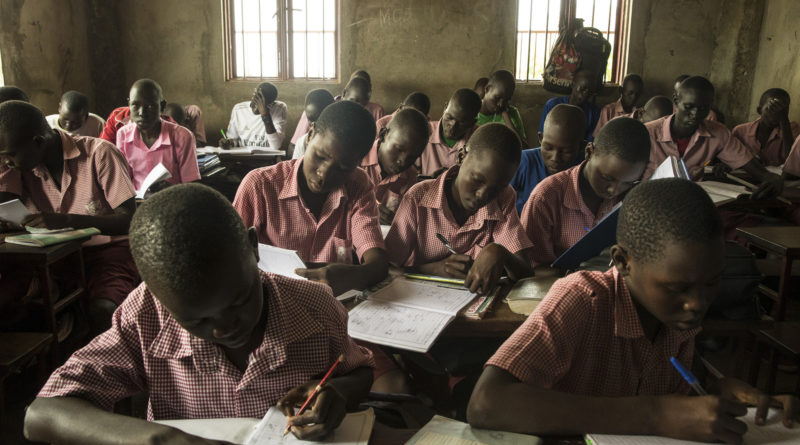Dr Tristan McCowan is a researcher at the Institute of Education, University College London. He was the expert adviser for the latest HEART topic guide on Higher Education. The topic guide looks at building the capacity of higher education (HE) systems and enabling structures in low-income countries. It also looks at how effective partnerships can be generated to support these. HE plays a critical role for overall national development. In this HEART talks Dr McCowan discusses the role of HE, major global forces, challenges and examples of innovations.
The role of higher education in society today
The role of HE is becoming increasingly recognised as important for international development. Economists have found higher returns to HE than previously realised. HE is needed to train professionals to provide basic services to achieve the millennium development goals.
There are three activities of universities that we can see having an impact in society: 1) teaching, 2) research, 3) public service/community in engagement. The third is less acknowledged, this can include knowledge exchange activities and providing facilities and resources for communities to use.
Along with economic benefits, non-economic benefits of universities relating to health and nutrition, governance, human rights, gender equality should be recognised.
Major global forces impacting higher education today
Massification is the most obvious trend. This has been in response to huge demographic changes: population growth, expansion of primary and secondary education meaning there are many more school leavers who are interested in going to university. The changing nature of the labour market has led to an increased need for a higher education diploma.
Another important global force impacting HE is moves towards the market. This has come from political and economic thought around the role of the state and increasing attachment to the market as a way of allocating resources and providing services in society. It has also resulted from a crisis of funding for HE. University systems have had to rely on private sources of funding to support themselves. This has led to the growth of private, for-profit institutions; the partial privatisation of public universities; and commercialisation of a range of other activities. This has changed the nature of the university as an institution.
Globalisation has also had an impact on HE. Internationalisation has been a key trend in recent years. For some countries this is an opportunity to create revenue by attracting international students. For others it is an opportunity to send their students and staff abroad. Globalisation has also led to international ranking and comparisons between universities around the world.
A trend which is very recent is known as ‘unbundling’. This is to do with the potential benefits of unpackaging some of the things commonly associated with the university for example, teaching only institutions. And the emergence of massive open online courses (MOOCs) which present content with very little else.
The major challenges facing higher education today
Successfully running a university can be thought of as successfully juggling equity, quality and funding. All three of these areas represent significant difficulties. To do all three well at the same time is really difficult for resource-constrained countries and also for high-income countries.
The main expansion seen in universities in recent years is for the middle- or upper middle-class. There is a problem with low-income students not going to university. There are also issues of gender equality within certain disciplines and countries. There are also ethnic, religious, language and regional barriers. Higher education systems are highly inequitable.
There is also a significant problem of quality. Similar to what has happened in primary education the very rapid expansion of university systems has led to real problems of quality. For example straining infrastructure, out-of-date ICT facilities, lack of lecturers, and out-dated curricula and learning approaches. There is a social perception that graduates are emerging without adequate learning. Regulation is required.
The pressure for expansion of higher education is extremely difficult to fund. There is a danger in pushing the costs down too far having a negative impact on quality. If costs are transferred to students or families there are implications for equity.
Most promising innovations and partnerships for building the capacity of higher education systems
There are not any solutions that are likely to work in all contexts but Tristan talks about some examples.
In Brazil, there is a government scheme ‘university for all’. The scheme is for private universities to offer free places for low-income students in exchange for tax breaks. More than a million students have gone to university through this scheme was set up in 2004. There are concerns over quality, regulation is difficult.
The University for Development Studies in a predominantly rural region in northern Ghana, ensures all first and second year students do two months in the summer on a community placement. They leave the classrooms to live in a remote village. This addresses the divide between universities and the communities in which they are inserted. This has been a rich experience for students. It also helps with the application of theoretical knowledge to practical issues by looking at the issues faced by communities and developing strategies and implementing them.
Partnerships between universities are also important. For example there was a partnership between York St. Johns University in the UK and a group of universities in Nairobi, Kenya. They ran an academic staff development programme bringing together a group in Kenya who were already committed to transforming teaching and learning in their institutions. Those staff went on to develop staff development programmes in their respective institutions. This led on to a national association for enhancing teaching and learning.
The hashtag #HigherEd4dev can be used to join in the conversation with others who have accessed the guide. Tweet to us at @HEART_RES with any comments you might have.


